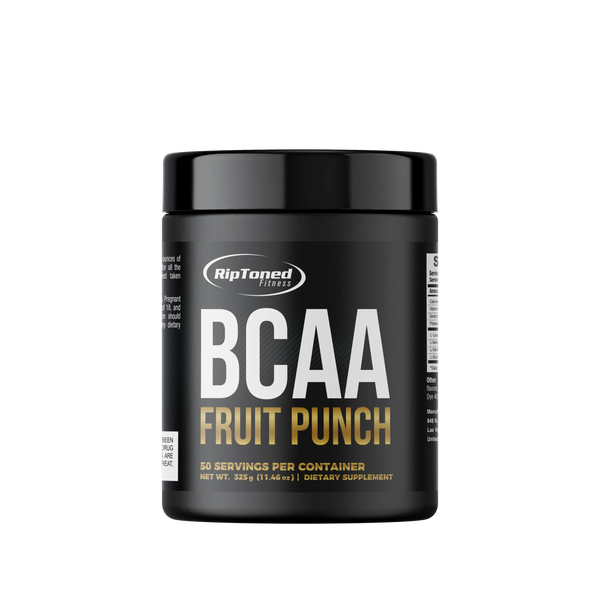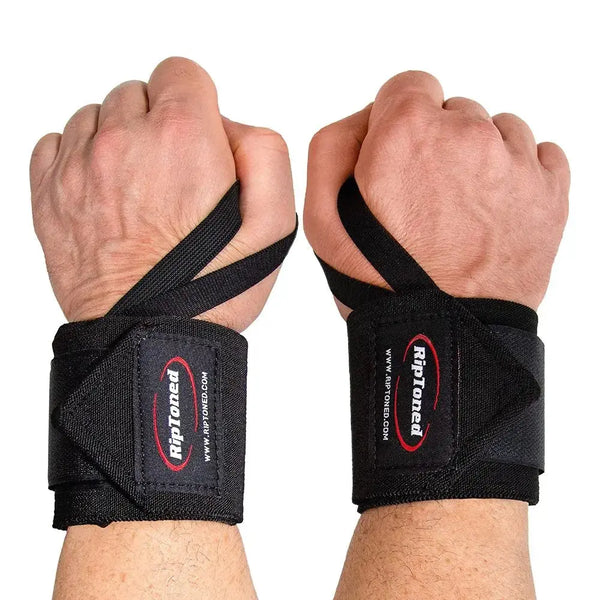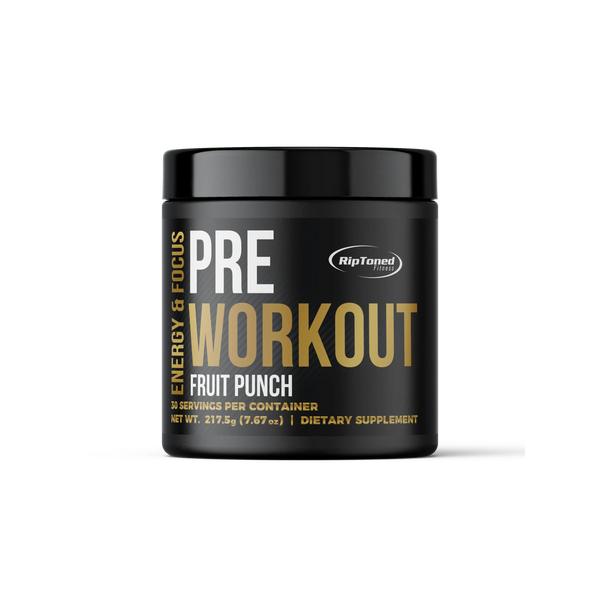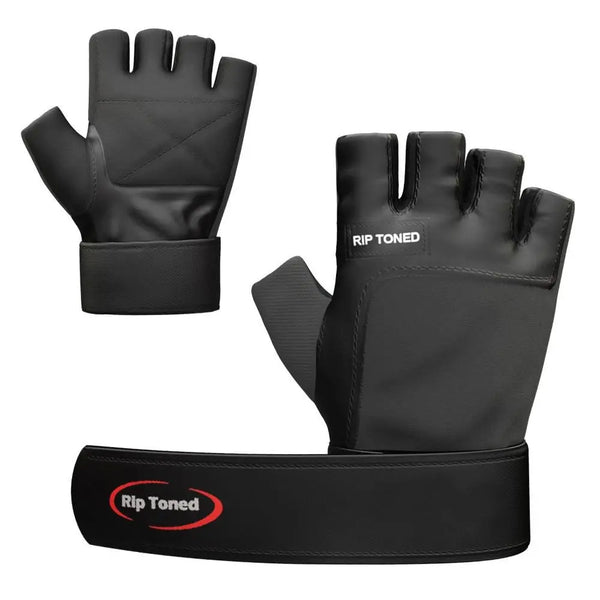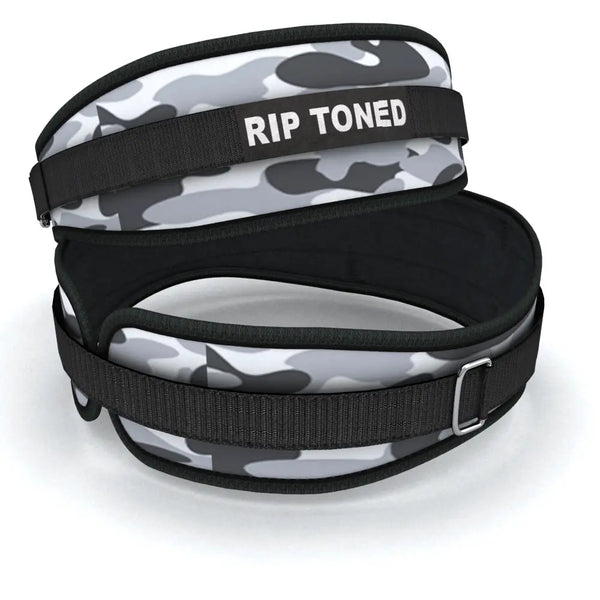
Should Boxers Lift Weights? Insights & Benefits Explained
Mark PasayShare
Should boxers lift weights? Yes, but with a carefully tailored program.
While traditional views suggest that weightlifting can make boxers bulky and slow, recent evidence shows that weight training can enhance power, strength, and injury resistance without compromising speed and agility.
This article will explore how weightlifting can be effectively integrated into a boxer’s training regimen.
Key Takeaways
- Weightlifting, when properly integrated into a boxer’s training program, can enhance strength and power without compromising speed and agility, debunking the myth that it makes boxers too bulky and slow.
- Functional strength training, which focuses on developing muscle capabilities necessary for boxing, is more beneficial than muscle hypertrophy, which increases muscle size without necessarily enhancing performance.
- A well-structured weight training routine for boxers should incorporate compound movements, plyometric exercises, and isometric training, balanced with adequate rest, to optimize performance and prevent injuries.
The Debate on Weight Lifting for Boxers
Historically, weightlifting has been stigmatized in the boxing world. The outdated belief that lifting weights makes boxers big and bulky thus slowing them down and reducing their flexibility, has persisted for decades.
Many veteran boxing coaches discouraged weight training, fearing that increased muscle mass would negatively impact a boxer’s speed and agility. The concern was that a boxer with too much muscle might lose the fluidity and quickness essential for effective punching and movement in the ring.
However, recent evidence has started to shift this perspective. Studies and practical experiences have shown that weightlifting when done correctly, can enhance a boxer’s strength and power while also shedding weight for specific divisions. It is now understood that boxers need to lift weights, but not in the same way as bodybuilders.
The key lies in adopting a correct weight training program tailored to the unique demands of boxing. A balanced approach ensures that the benefits of weightlifting, such as increased power and reduced injury risk, are maximized without compromising speed and agility.
The necessity for a tailored approach cannot be overstated. Weightlifting can slow down a boxer if not integrated properly into their training regimen. For instance, overly focusing on heavy weights and improper routines can lead to muscle tightness and a loss of speed.
Therefore, a well-structured program that emphasizes functional movements and mimics the dynamic nature of boxing is essential. This way, boxers can reap the benefits of weightlifting without falling into the pitfalls that once made it a controversial topic in the sport.
Functional Strength vs. Muscle Bulk
In boxing, functional strength is far more valuable than sheer muscle bulk. While hypertrophy training, commonly associated with bodybuilding, focuses on increasing muscle size for aesthetic purposes, functional strength training aims to develop muscles useful in real-world activities, such as boxing. This distinction is crucial because boxing performance hinges not on the size of one’s muscles but on their ability to perform explosive, coordinated movements.
Functional strength involves exercises that enhance a boxer’s power, speed, and endurance without adding unnecessary muscle mass that could hinder their performance. For instance, exercises that target the core muscles and major muscle groups in a way that mimics the actions performed in the ring are more beneficial. This kind of training improves a boxer’s ability to generate maximum force quickly, which is essential for delivering powerful punches.
By focusing on functional strength rather than muscle bulk, boxers can maintain their agility and speed while still reaping the benefits of increased power and endurance.
How Weight Training Enhances Boxing Performance
Weightlifting can significantly enhance a boxer’s strength, power, and physical conditioning. When tailored to the specific needs of boxing, weight training can improve functional strength and power without compromising speed or agility. Some exercises that can benefit boxers include:
- Landmine presses, which replicate the punching motion and help develop explosive power
- Squats, which strengthen the legs and core
- Deadlifts, which improve overall strength and power
- Pull-ups, which target the back and arms
- Push-ups, which build upper body strength
Incorporating these exercises into a boxer’s training routine can help them become stronger in the ring.
A well-structured weight training program can also increase a boxer’s muscular endurance, helping them maintain their performance throughout long and grueling bouts. For instance, the bench press, when combined with exercises that maintain speed and flexibility, can significantly increase punching power. Additionally, exercises like the Trap Bar Deadlift and Clean Pulls from Olympic lifting are crucial for developing explosive strength in multiple muscle groups, which translates directly to better performance in the ring.
Moreover, weight training can help prevent injuries by strengthening the muscles and improving overall body control. Stronger lower back and midsection muscles, for instance, are vital for maximizing power in any movement, including punches. Exercises like woodchoppers and axe chops can enhance core strength and explosiveness, further boosting a boxer’s punching power.
By focusing on a balanced weight training routine, including the use of lighter weights, boxers can enhance their entire body performance and become more competitive in the ring while also managing their body weight.
Types of Weight Training Exercises for Boxers
Boxers can benefit from a variety of weight-lifting exercises that enhance their strength, power, and overall performance. These exercises can be broadly categorized into three types: compound movements, plyometric exercises, and isometric training. Each type of exercise offers unique benefits and, when combined, can create a comprehensive weight training routine that addresses all aspects of a boxer’s physical conditioning.
Compound Movements
Compound movements work multiple muscles and joints simultaneously, providing a balanced and multi-muscle approach to strength training. These exercises are particularly beneficial for boxers because they enhance performance without compromising speed or flexibility. For example, the Trap Bar Deadlift is preferred over the Conventional Deadlift for boxers due to its better scapula retraction and hip position, which are crucial for generating power.
Compound movements like squats and bent-over rows into a boxer’s training routine can significantly improve their functional strength. Squats, for instance, engage 70% of the body’s muscles and focus on the legs, which are a primary driving force of punching power. The bent-over row is another excellent compound exercise that targets the back and core muscles, enhancing overall strength and stability.
By including these exercises in their routine, boxers can build a strong foundation that supports their performance in the ring.
Plyometric Exercises
Plyometric exercises involve explosive movements that utilize the stretch-shortening cycle (SSC) of muscles, which is essential for developing the rate of force development needed for powerful punches.
The SSC has three phases: eccentric (muscle stretching), amortization (time between stretch and contraction), and concentric (muscle shortening and contraction). By training this cycle, boxers can improve their explosive power and hand speed.
Plyometric exercises include box jumps, which help develop landing mechanics and explosiveness, and single-leg plyometrics, which improve speed, coordination, and ankle reactivity. These exercises not only enhance a boxer’s punching force but also improve footwork, speed, and balance, making them harder-hitting athletes overall.
Incorporating plyometric exercises into a boxer’s training routine can thus provide significant benefits in both power and agility.
Related Products
Isometric Training
Isometric training involves holding a static position without joint movement, enhancing isometric strength, and improving body control during punches, defensive maneuvers, and clinches. This type of training is beneficial for boxers because it helps them maintain stability and control in high-pressure situations.
Examples of isometric exercises include planks and wall sits, which target the core and leg muscles, respectively. These exercises can help boxers develop the strength and endurance needed to hold their positions and deliver powerful punches. By including isometric training in their routine, boxers can improve their overall strength and control, making them more effective in the ring.
Designing a Weight Training Routine for Boxers
Designing an effective weight training routine for boxers involves incorporating the following phases with adequate rest between sessions to optimize performance and prevent overtraining:
- Strength training phase: Train 2 to 3 times per week with at least 48 hours between each session.
- Power training phase: Train 2 to 3 times per week with at least 48 hours between each session.
- Competition phase: Reduce the frequency of weight training to 1 to 2 sessions per week to avoid fatigue and maintain peak performance.
A balanced training routine should focus on the following:
- Lightweight training with high repetitions to increase endurance
- Heavy compound exercises to boost strength
- Plyometrics in extended warm-ups before strength or boxing sessions to enhance explosive power
Neglecting a balanced training routine that incorporates both strength and conditioning can impede overall performance, so it’s crucial to design a program that addresses all aspects of a boxer’s physical conditioning.
Common Mistakes to Avoid in Weight Training
Boxers often make the following mistakes:
- Overtraining can lead to fatigue and increased risk of injury. To avoid this, it’s important to listen to your body and ensure adequate rest between training sessions.
- Improper form during weightlifting exercises can result in inefficient workouts and potential injuries.
- Focusing too much on lifting heavy weights can neglect the development of speed and agility, which are crucial for boxing.
Pushing through pain during weightlifting can cause long-term injuries, so it’s essential to prioritize injury prevention by using proper form and not overexerting yourself. Boxers should avoid weight training sessions immediately before a fight training session to stay fresh and focused. By being aware of these common mistakes and taking steps to avoid them, boxers can optimize their performance and prevent injuries.
Integrating Weight Training with Boxing Skills
Combining weight training with specific boxing exercises helps ensure a well-rounded training routine that enhances strength and boxing skills. For example, integrating weight training with exercises like hitting the heavy bag and shadow boxing can help boxers develop the explosive power and coordination needed for effective performance in the ring. It’s recommended to take 7 to 10 days off from heavy-weight work before competition while maintaining ring work to stay sharp.
Some boxers, like Nigel Benn, incorporate shadow boxing with light weights followed by shadow boxing without weights to enhance their punching power and speed. However, it’s not recommended to do shadowboxing at high speed while holding dumbbells, as it can lead to injuries. The key to generating explosive force in punching is to allow the body to relax and then flex the muscles at the precise moment, which requires timing and the ability to visualize the outcome.
By integrating weight training with boxing-specific exercises, boxers can create a comprehensive training routine that maximizes their performance, as boxing includes lifting weights.
Real-World Examples: Professional Boxers Who Lift Weights
Many professional boxers incorporate weight training into their routines to improve their strength, power, and overall performance. For instance, Anthony Joshua, a heavyweight champion, focuses on strength and conditioning through weight training to enhance his boxing performance. His training routine includes exercises that build explosive power and endurance, making him a formidable opponent in the ring.
Canelo Alvarez also uses weight lifting to improve his muscle endurance and punching power. He integrates exercises that enhance his overall strength, allowing him to maintain agility and speed while delivering powerful punches. Manny Pacquiao, another renowned boxer, includes weight training as part of his conditioning regimen to increase his explosive power and maintain agility in the ring.
Professional boxers like Evander Holyfield and Floyd Mayweather have also successfully incorporated weight training into their routines. Holyfield’s training program emphasized leg force development and anaerobic endurance, while Mayweather used resistance training with weights to improve his defensive skills and overall strength without gaining unnecessary bulk.
These examples demonstrate that weight training can be an essential part of a boxer’s training regimen, contributing to their success and performance in the ring.
Summary
In conclusion, weightlifting can be a valuable addition to a boxer’s training regimen when done correctly. By focusing on functional strength rather than muscle bulk, boxers can enhance their power, speed, and overall performance without compromising their agility. A balanced weight training program that includes compound movements, plyometric exercises, and isometric training can provide comprehensive benefits, improving physical conditioning and injury prevention.
Professional boxers like Anthony Joshua, Canelo Alvarez, and Manny Pacquiao have demonstrated the effectiveness of incorporating weight training into their routines. By avoiding common mistakes and integrating weight training with boxing-specific exercises, boxers can create a well-rounded training routine that maximizes their performance in the ring. Embrace weightlifting as a tool to enhance your boxing skills and take your performance to the next level.
Frequently Asked Questions
Is weightlifting necessary for boxers?
Yes, weight lifting can significantly enhance a boxer's strength, power, and overall physical conditioning when done correctly and tailored to boxing-specific needs.
Will lifting weights make a boxer slower?
Lifting weights can improve a boxer's power and speed if the training program emphasizes functional strength and avoids excessive muscle bulk. So, it won't necessarily make a boxer slower.
What types of weight training exercises are best for boxers?
For boxers, the best weight training exercises include compound movements, plyometric exercises, and isometric training to improve strength, power, and overall performance. These exercises are essential for enhancing boxing skills and physical abilities.
How often should boxers lift weights?
Boxers should lift weights 2 to 3 times per week during strength and power training phases, with at least 48 hours between sessions, and reduce to 1 to 2 sessions per week during the competition phase.
Can professional boxers benefit from weight training?
Yes, professional boxers can benefit from weight training as it helps improve their strength, power, and overall performance, as seen with athletes like Anthony Joshua, Canelo Alvarez, and Manny Pacquiao.

Related Posts
-
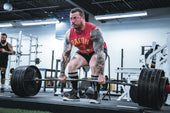
POWERLIFTING THE RIGHT WAY
-
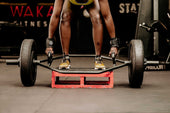
Unlock Your Strength Potential: Conquer Weak Grip Strength Now
-

Bench Press to Success - Mastering your form
-

5 Tips for Women to Build Lean Muscle Tone in 2024
-
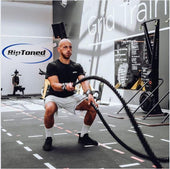
How to Get the Most Out of a Lifting Session
-

Working Out Under the Weather
-

The Lesser-known Benefits of Weightlifting
-

How Weight Training Supports Immune Health
-

The History of Weightlifting
-

Rest up to build up
-
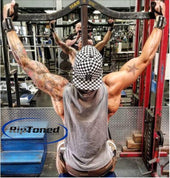
4 Tips to Improve Lifting Gains The Right Way
-

4 Tips to Prevent Training Injuries
-

Top 3 Work Out Myths EXPOSED!!
-

Common Lifting Injuries (And How to Avoid Them)
-
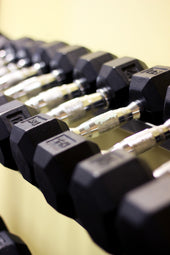
Hit the Gym or Stay at Home?
-

Weightlifting Benefits – Many Health Benefits for Men and Women
-

How Many Times a Week Should I Deadlift? A Guide to Deadlift Frequency and Programming
-

Can Deadlifts Hurt Your Back? Understanding Risks and Prevention
-

Why Does Whey Protein Make Me Sick
-

Can Protein Powder Upset Your Stomach
-

What To Mix Unflavored Protein Powder With
-

Crush Your PRs: The Gradual Strength Increase Guide for CrossFitters
-

Whey vs Collagen Protein: Which Is Best for You?
-

Can I Take Whey Protein Without Working Out? What You Need to Know
-

Why Does Whey Protein Hurt My Stomach: Causes and Solutions
-

Boost Your Run: Should You Take Pre-Workout Before Running?
-

Top Pre-Workout Benefits: Boost Energy and Enhance Performance
-
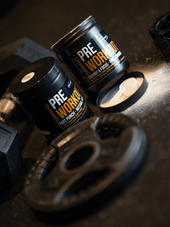
How Long Does Pre-Workout Take to Kick In? Find Out Here!
-
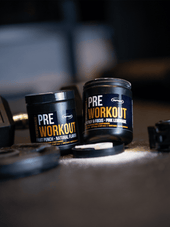
How Long Does Pre-Workout Last? Your Essential Guide
-

Does Pre-Workout Give You Pimples
-

How Long Does Pre-Workout Stay in Your System
-

When Should I Take Pre-Workout
-

Can I Mix Creatine With Pre-Workout
-

Long Term Side Effects of Pre-Workout Supplements
-

How Much Caffeine in Pre-Workout
-

Pre-Workout Alternatives
-

Does Pre-Workout Break a Fast
-

What to Eat Pre-Workout
-

What is In Pre-Workout
-

Advantages of Pre Workout Supplements
-

How To Get Rid Of Pre Workout Itch
-

How To Make Your Own Pre Workout
-

How Many Scoops Of Pre Workout Should I Take
-

How Bad Are Pre Workouts For You
-

How Long Before A Workout Should I Take Pre-Workout
-

How Much Caffeine Is In Bucked Up Pre Workout
-

How Long Does Pre Workout Increase Blood Pressure
-

What Does Pre Workout Do
-

Can I Use Sprite As Pre Workout
-

Can Supplements Boost Weightlifting Motivation
-

Why Do Weightlifters Wear Belts
-

Does Lifting Weights Cause Varicose Veins? What You Need to Know
-

Does Lifting Weights Affect Uterus Health? What Women Need to Know
-

How Lifting Weights Can Affect Your Sex Drive: Does Lifting Weights Make You Horny?
-

Why Don't I Sweat When I Lift Weights? Understanding the Causes
-

Why Are Physical Fitness Attitudes Important? Insights & Benefits
-

Why is Anytime Fitness So Expensive? Understanding Membership Costs
-

Substitute For Whey Protein Powder In Keto Baking
-

How Many Calories Does 1 Hour of Weightlifting Burn
-

A Guide To Cleaner Protein Supplementation
-

What Causes The Frothiness in Your Fitness Drink
-

How to Take Collagen Safely After a Gastric Bypass: Essential Tips
-

Why Do Protein Shakes Make Me Nauseous? Top Reasons and Solutions
-

Why Does My Stomach Hurt After Protein Shake? Understanding Your Digestive Discomfort
-

Can I Take Collagen After Gastric Bypass
-

Why Does My Protein Shake Foam
-

Best Belt for CrossFit: Complete Guide 2025
-

Rip Toned vs SBD Belts: Which Brand Offers Better Value and Performance?
-

The Complete Guide to Women's Weightlifting Belts
-
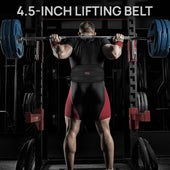
Should Beginners Use a Weightlifting Belt
-
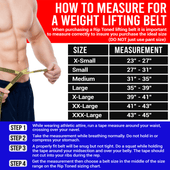
10mm vs 13mm Belt Thickness: The Complete Guide
-

Prong Buckle vs Lever Buckle Belts: The Ultimate Comparison Guide
-

Powerlifting Belts vs Bodybuilding Belts
-

Weightlifting Straps vs. Lifting Hooks: Which is Better?
-

How to Treat Weightlifters Elbow
-

Should You Use Lifting Straps During Bicep Curls for Better Gains?
-

Weightlifting Straps vs. Bare Hands
-

Benefits of Using Weightlifting Straps in Training
-

Mistakes to Avoid When Using Weightlifting Straps
-

Wrist Wraps While Doing Curls
-

Should I Use Wrist Wraps for Bench Press
-

How to Clean Wrist Wraps
-

Are Wrist Wraps Necessary
-

The Ultimate Deadlift Guide: From Form to Performance
-

What Exercises to Use Wrist Wraps For?
-

Are Wrist Wraps Cheating on Bench?
-

Do Wrist Wraps Make You Stronger?
-

Do Wrist Wraps Help With Grip Strength
-

When to Start Using Wrist Wraps
-
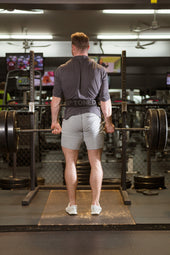
Best Weightlifting Belts 2025: Ultimate Buyer's Guide
-

How to Measure for a Weightlifting Belt
-

Can Wrist Wraps Boost Your Grip Strength in Weightlifting?
-

Should You Use Wrist Wraps for Bench Press and Overhead Press?
-

Do Wrist Wraps Help with Wrist Pain During Strength Training? Find Out Here
-

How Can Wrist Wraps Prevent Injury During Heavy Lifting?
-
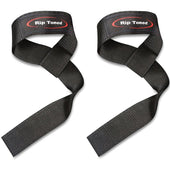
How Do You Use Weightlifting Straps: A Simple Guide for Better Lifts
-

How to Pick a Lifting Belt: A Practical Guide for Every Lifter
-

How to Measure for Lifting Belt
-

Do Weight Lifting Belts Help Lower Back Pain
-

Do I Need a Lifting Belt
-

Purpose of Weight Lifting Belt
-

When to Use a Lifting Belt
-

What Does A Lifting Belt Do
-

What Do Wrist Wraps Do For Lifting
-

How To Wrap A Wrist For Carpal Tunnel
-

How To Wrap Wrist For Pain
-

What Are Wrist Wraps For
-

How Do You Use Weightlifting Straps
-

Why Is Mental Focus Important in Powerlifting? The Key to Peak Performance
-

Can Bodybuilding Help with Fat Loss? Discover Proven Benefits
-

Mastering the Basics: How to Improve Your Powerlifting Technique
-

Why Is Proper Form Crucial in Powerlifting? Tips for Safe and Effective Lifting
-

Can Powerlifting Increase Athletic Performance? Exploring Strength Gains and Sport Benefits
-

Top Tips on How to Avoid Common Injuries in Bodybuilding
-

Why Is Recovery Essential in Bodybuilding: Key Strategies and Benefits
-

Can Powerlifting Improve Overall Fitness? Explained
-

How Many Deadlifts Should I Do?
-

How Much Can a 17 Year Old Deadlift? Average Weights and Tips
-

Why Aren’t My Arms Growing as Fast as My Chest? Top Reasons Explained
-

How to Do Back Compression Deadlift: Best Tips for Pain-Free Lifting
-

Why Is My Bench Press Not Increasing
-
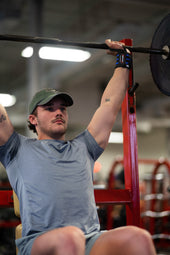
Unlock Your Potential: How to Get Stronger Gradually
-

Unlock Muscle Growth: Understanding What Is the 6-12-25 Rule
-

5 Lbs of Muscle in a Month? Let's Get Real
-

Get that celebrity booty in 10 easy to do work out routines
-

A.M. vs P.M. Workouts
-

Fasting Do’s and Dont's
-

5 Surprising Sources of Protein
-
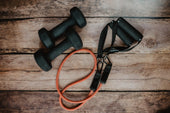
Home Workout Upgrade Must-haves
-
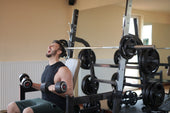
Top 5 Reasons You Aren’t Reaching Your Weightlifting Goals
-
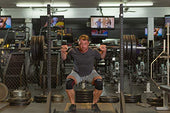
Squats: A Must in Weightlifting and for Strength Training
-

Weightlifting Routines for Men, Women and Beginners

